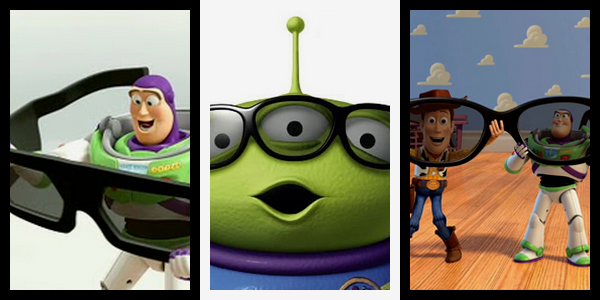
Remember a time when 3-D movies did not used to be popular?
For the past few decades, various forms of three-dimensional entertainment have only appealed to a selective niche market. They were mostly contained within amusement parks, targeted towards children and their parents during the typical family summer vacation. These 3-D movies never hit it off in mainstream culture, because wearing those clunky glasses to the cinema did not feel comfortable, convenient, or economically viable. Besides, the enjoyment derived from an additional dimension was not substantial enough for businesses or consumers to invest in this media.
In the age where many naysayers predicted the demise of television and movie entertainment, few people expected there would be a sudden upsurge in 3-D films during the recent years. Not only did they reach out to the younger demographic, but many adult moviegoers are also fascinated by the unique viewing experience. These consumers were even willing to shell out extra money in the cinema for the three-dimensional alternative. As evident by the unprecedented number of 3-D movie releases in the upcoming year, this form of entertainment has been surprisingly revived. The real question remains: how long will this modern phenomenon sustain?
Analysis
Like many cultural norms in the recent era, the renewed popularity of 3-D films started with Avatar. James Cameron’s massively successful cinematic juggernaut introduced us to a breathtaking visual experience. The movie was just gorgeous in every aspect and detail. This included watching the magnificent CGI visual effects come to life, as well as the effortlessly natural stereoscopic 3-D projected on the big screen. Viewers were so immersed into the movie that they nearly forgot they are watching one. Avatar in 3-D helped the moviegoer fully engage and experience an enriching visual universe beyond their imaginations.
Avatar triggered a curious response in the consumer market. Investors suddenly realized there was a high demand for 3-D movies, contrary to the popular belief in the past several decades. Moviegoers also discovered how much they enjoyed interacting with a three-dimensional film. Hence, many family-friendly franchises capitalized on this phenomenon. The marketing campaigns for Toy Story 3 revolved around the 3-D elements more than the fact that it was the final instalment. Shrek Forever After, along with other children’s movies, followed in similar footsteps. Likewise, the horror genre also found a receptive audience. The final edition of Saw was shot in 3-D, because is there any better way to enjoy splattered blood, disjointed body parts, and twisted psychological warfare?
 | Naturally, the mass appeal of three-dimensional entertainment soon branched out from the cinematic medium. There is a new line-up of 3D technology ranging from televisions to video games to computer software. Toshiba is expected to launch the first no-glasses 3D television by the end of the year. The 3DS will be available to the public in 2011. Even Roxio announced its plans to release video editor software that allows home users to create, edit, and share their three-dimensional media. |
My personal theory is that the 3D popularity began with the Wii gaming console around 2006. The Wii may not have introduced a new gaming experience per se, but it certainly popularized the notion of interacting with an entertainment medium, because blending reality with the virtual world has always been an appealing prospect. Three dimensional films and televisions operate in similar fashions, since they allow the viewer to experience rather than just watch the entertainment. 3D transforms a spectator into an observer, so that we are now one step closer to the medium.
Unfortunately, smacking the 3D label at the end of a product feels like the stamp of approval nowadays. One must wonder if this recent technological trend is worth all the fuss that it creates. Given its original niche roots, marketing a novelty product to a mass market may be quite challenging. The 3D elements in Avatar were positively received because they felt fresh and new at the time, but will the appeal be lost if these features existed everywhere else? For now, it seems ambiguous whether the three-dimensional entertainment is here to stay as many have predicted. It could survive as long as the 3-D elements manage to blend in with the product, instead of having it define the product altogether. For example, the emphasis on a 3-D movie should focus on the movie first rather than the additional visual component.
Nonetheless, it seems likely that 3D entertainment will exist in mainstream culture for a very long time. What is next in the future of three-dimensional products? 3-D books? 3-D online stores? 3-D pornography?
Sorry, but you know the last trend is definitely inevitable.





No comments:
Post a Comment